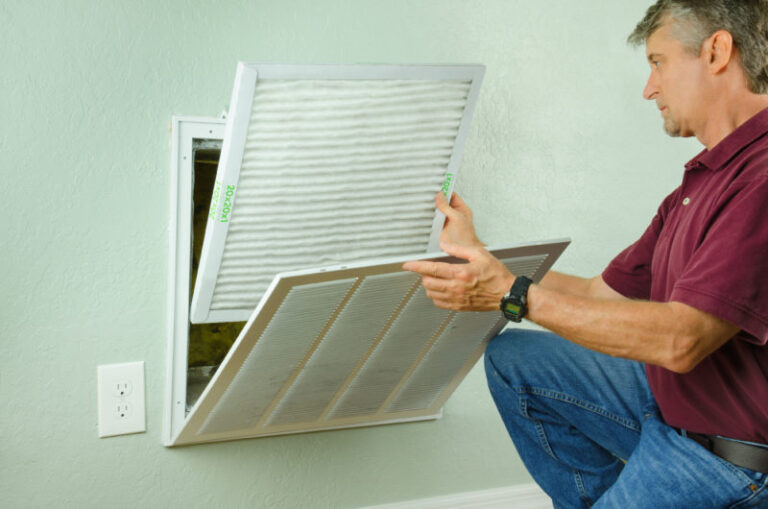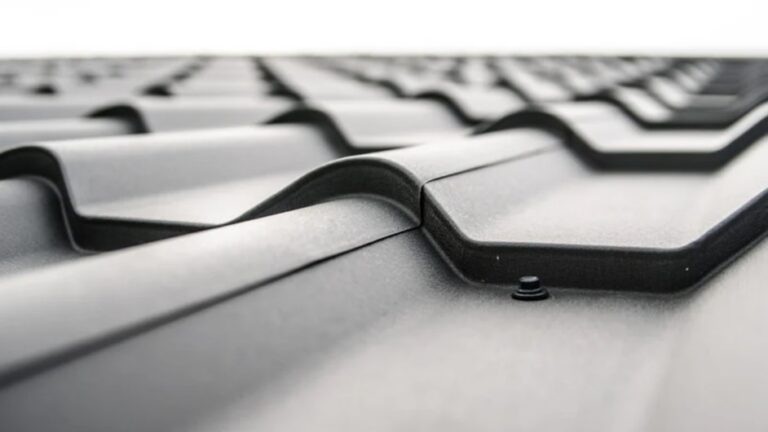Health Implications of Asbestos Exposure
Asbestos is a mineral fiber that was once widely used in building materials. It’s dangerous when disturbed, releasing tiny fibers into the air. Inhaling these fibers can lead to serious health issues. Diseases caused by asbestos exposure include lung cancer, mesothelioma, and asbestosis. These conditions often take years to develop, making early detection difficult. People renovating older homes are at risk, especially if they disturb materials like insulation, floor tiles, or roofing that might contain asbestos. It’s crucial to handle asbestos with care and to consult professionals for safe removal.
Environmental Impact of Asbestos Disposal
Improper disposal of asbestos can harm the environment. When asbestos waste is not handled correctly, fibers can contaminate air and water. This poses a risk not only to those directly involved in renovation projects but also to the wider community. Asbestos waste should be double-bagged, sealed, and labeled before being taken to designated disposal sites. These sites have specific protocols to prevent environmental contamination.
Legal Consequences of Improper Asbestos Handling
Handling asbestos without following legal guidelines can lead to severe penalties. Regulations require proper identification, removal, and disposal of asbestos materials to protect public health. Failure to comply can result in hefty fines and legal action. For example, unlicensed asbestos removal or improper disposal can lead to fines ranging from thousands to hundreds of thousands of dollars. Hiring licensed professionals ensures compliance with laws and reduces the risk of legal issues.
Identifying Asbestos in Residential Properties
Common Household Items Containing Asbestos
Many older homes, especially those built before the 1980s, might have materials that contain asbestos. Common items include insulation, flooring, ceiling tiles, and roofing materials. Other potential sources are adhesives, HVAC ductwork, electrical components, drywall, shingles, siding, plumbing, and fireplace materials. It’s important to treat these materials as if they contain asbestos until they are tested.
Visual Signs of Asbestos Presence
Identifying asbestos by sight alone is challenging, as it often resembles other materials. However, some signs might suggest its presence, such as old, deteriorating insulation or vintage floor tiles. If you suspect asbestos, it’s crucial to avoid disturbing the material. Disturbance can release fibers into the air, posing a health risk.
Professional Asbestos Inspection Services
Hiring a professional is the safest way to confirm the presence of asbestos. Professionals have the tools and expertise to safely collect samples and conduct tests. They can also advise on the best course of action if asbestos is found. For those living in homes built before the 1990s, ensuring safe testing and removal of potential asbestos materials is essential to maintaining a safe living environment.
Safe Practices for Handling Asbestos During Renovations
Personal Protective Equipment for Asbestos Handling
When dealing with asbestos during renovations, ensuring the right protective gear is paramount. Personal protective equipment (PPE) is not just a recommendation; it’s a necessity. Workers must wear N-100 or P-100 respirators to shield themselves from inhaling hazardous fibers. Additionally, protective suits, gloves, and goggles are essential to prevent asbestos particles from making contact with the skin or eyes. This gear acts as the first line of defense against exposure.
Creating a Safe Work Environment
Establishing a controlled work area is vital for minimizing asbestos risks. Before starting any removal, the area should be sealed off with plastic sheeting to prevent contamination. Negative air pressure units are employed to ensure fibers don’t escape the work zone. It’s also crucial to disable HVAC systems to stop the circulation of asbestos fibers. Posting clear warning signs alerts everyone to the dangers present, ensuring that only authorized personnel enter.
Proper Techniques for Asbestos Removal
Effective asbestos removal hinges on the right techniques. Wet removal is a common method where asbestos materials are dampened to reduce dust. The waste must then be double-bagged in 6-millimeter plastic and placed in leak-tight containers. This prevents any release of fibers during transportation. Decontamination units are used for workers to safely remove contaminated clothing and equipment, maintaining a clean environment. Always remember, hiring licensed asbestos abatement professionals is the safest approach to ensure compliance and safety.
Regulations Governing Asbestos Disposal
Federal and State Asbestos Disposal Laws
When dealing with asbestos, understanding the legal landscape is crucial. At the federal level, several key laws regulate asbestos disposal. The Clean Air Act of 1970 identified asbestos as a hazardous air pollutant, prompting the EPA’s air toxics regulation to set safety standards. The Toxic Substances Control Act of 1976 further empowered the Environmental Protection Agency (EPA) to oversee asbestos regulation. Additionally, the Asbestos National Emission Standards for Hazardous Air Pollutants (NESHAP) dictate how asbestos should be managed during demolition and renovation activities. On the state level, regulations can vary, with some states imposing stricter rules than the federal government.
Penalties for Non-Compliance with Asbestos Regulations
Ignoring asbestos regulations is not just risky—it’s costly. Fines for non-compliance can be steep, and in some cases, individuals or companies may face legal action. The Occupational Safety and Health Administration (OSHA) enforces penalties for improper handling and disposal in occupational settings. It’s critical for contractors and homeowners alike to adhere to these laws to avoid hefty fines and potential health risks.
Role of Licensed Professionals in Asbestos Abatement
Handling asbestos is not a DIY project. Licensed professionals are trained and certified to safely manage asbestos removal and disposal. They follow strict protocols to ensure that asbestos fibers do not become airborne, which is a significant health hazard. These experts are well-versed in both federal and state regulations, ensuring compliance throughout the abatement process. Hiring a licensed professional not only mitigates health risks but also ensures adherence to legal requirements, protecting you from potential penalties.
Innovative Methods for Asbestos Waste Management
Recycling and Reusing Asbestos Materials
Recycling asbestos is one of the most promising ways to manage asbestos waste. This process involves breaking down asbestos fibers and transforming them into non-hazardous materials. Thermal recycling is a cutting-edge method that heats asbestos to high temperatures, effectively converting dangerous fibers into safe substances. In Australia, this technique has gained traction as a significant advancement in asbestos treatment technology, promoting safer environmental practices.
Recycling not only reduces the volume of waste but also creates reusable products. The end products of this process can be utilized in various applications, such as construction materials and roadways. The benefits of recycling are manifold, including:
- Permanent solution: The recycling process destroys asbestos fibers, turning them into safe substances.
- Reusable products: The end products can be used in a variety of applications.
- Reduced waste: This process lowers the amount of asbestos waste, saving landfill space and potentially halting the dumping of asbestos into landfills.
Emerging Technologies in Asbestos Disposal
Emerging technologies are revolutionizing how we handle asbestos waste. One such innovative technique involves biological treatment using specific microorganisms like fungi to break down asbestos cement wastes. These methods are still in the experimental stage but show great promise in reducing the harmful impact of asbestos.
Another approach is the use of high-speed milling processes and microwave thermal treatments. These methods aim to transform asbestos into non-hazardous materials such as ceramic bricks or porcelain tiles. Although these technologies are still developing, they represent a significant step forward in asbestos waste management.
Benefits of Reducing Asbestos Waste Volume
Reducing the volume of asbestos waste has several benefits. Smaller waste volumes mean less space is needed in landfills, which is crucial given the limited landfill capacity. Additionally, reducing waste volume can offset the costs associated with asbestos abatement. Instead of paying for hazardous waste disposal, recycling can produce safe materials for use in various industries. This not only cuts costs but also provides an ethical option for managing asbestos, preventing future asbestos-related diseases.
In conclusion, while traditional methods of asbestos disposal often involve simply transferring the problem to landfills, these innovative methods offer a more sustainable and effective approach. By transforming asbestos into non-hazardous materials, we can significantly lessen the environmental and health risks associated with asbestos waste.
Challenges in Asbestos Waste Disposal
Limited Landfill Space for Asbestos Waste
The disposal of asbestos waste is becoming a pressing issue due to the limited availability of landfill space. Landfills are not a sustainable solution, as they only temporarily store asbestos without breaking it down. Countries like Poland are experiencing a crisis, with their landfills reaching capacity and unable to handle the increasing amounts of asbestos waste. This problem is exacerbated by the fact that once asbestos is in a landfill, it remains there indefinitely, posing a long-term environmental risk.
Environmental Risks of Asbestos in Landfills
Asbestos waste in landfills poses significant environmental risks. Asbestos fibers can potentially leak into the surrounding environment, especially in areas prone to flooding. These fibers can contaminate soil and water sources, leading to broader ecological damage. In regions with frequent natural disasters, the risk of asbestos fibers becoming airborne or entering water supplies is heightened, threatening both the environment and public health.
Public Health Concerns Related to Asbestos Disposal
Improper disposal of asbestos waste presents serious public health concerns. When asbestos fibers become airborne, they can be inhaled, leading to severe health issues such as lung cancer and asbestosis. Communities living near landfill sites are particularly at risk, especially where landfills are located near residential areas. The need for safe asbestos waste disposal practices is crucial to mitigate these health risks and protect vulnerable populations.
The Global Perspective on Asbestos Waste
International Asbestos Removal Initiatives
Dealing with asbestos waste isn’t just a local problem; it’s a global challenge. Countries worldwide are taking different approaches to manage this hazardous material. For instance, Poland has set an ambitious goal to remove all asbestos from its buildings by 2032. Meanwhile, Australia has implemented a comprehensive plan to manage and remove asbestos, disposing of over 1.2 million tonnes into landfills in just one year. These initiatives highlight the scale and urgency of the asbestos issue.
Comparative Analysis of Asbestos Policies Worldwide
When you look at how different countries handle asbestos, you see a wide variety of strategies. The UK, for example, requires asbestos to be double-bagged and securely stored, with only 29 landfills equipped to handle such waste. In contrast, the European Union has pushed for methods to deactivate asbestos fibers, aiming for a more sustainable solution. These differences underscore the need for international cooperation and shared strategies to effectively tackle asbestos waste.
Future Trends in Asbestos Waste Management
The future of asbestos waste management is leaning towards innovation and sustainability. Emerging technologies, like those used by companies such as Gould and Asbeter, are transforming asbestos into non-hazardous materials that can be reused in construction. Techniques like heating or chemically treating asbestos to change its properties are gaining traction. These methods not only reduce the volume of asbestos waste but also offer a more environmentally friendly alternative to traditional landfilling. As these technologies develop, they promise to change how we think about and handle asbestos waste globally.
Preventing Asbestos Exposure During Home Renovations
Identifying Potential Asbestos Hazards
When renovating older homes, identifying potential asbestos hazards is crucial. Homes built before the 1990s often contain asbestos in materials like insulation, floor tiles, and roofing. It’s essential to recognize these materials to prevent exposure. If you suspect asbestos, avoid touching or disturbing it. Instead, hire a licensed asbestos assessor to confirm its presence. This step ensures safety and compliance with regulations.
Steps to Minimize Asbestos Exposure
Minimizing asbestos exposure during renovations involves several critical steps:
- Hire Professionals: Only licensed professionals should handle asbestos removal. They have the expertise and equipment to do it safely.
- Use Proper Equipment: Employ HEPA filters to capture fine particles and prevent airborne asbestos fibers. This reduces health risks significantly.
- Seal Off the Area: Use plastic sheeting to seal off the work area, preventing asbestos fibers from spreading to other parts of the house.
Hiring Qualified Asbestos Abatement Professionals
Hiring qualified asbestos abatement professionals is a smart move. These experts follow strict safety protocols and regulations, ensuring safe removal and disposal of asbestos materials. They also provide guidance on the process, making sure your home is safe for your family. Consulting with professionals gives peace of mind and protects against potential health hazards.
The Long-Term Effects of Asbestos Exposure
Diseases Linked to Asbestos Exposure
Breathing in asbestos fibers poses serious health risks, including mesothelioma, lung cancer, and asbestosis. There is no safe level of exposure, and increased contact heightens the risk of developing these diseases. Mesothelioma, a rare and aggressive cancer, primarily affects the lining of the lungs and abdomen. Asbestosis, on the other hand, is a chronic lung condition caused by scarring of lung tissue, leading to breathing difficulties. Lung cancer linked to asbestos exposure presents similarly to other lung cancers but is notably more severe in individuals who smoke.
Latency Period of Asbestos-Related Illnesses
Diseases from asbestos exposure can take a long time to develop. The latency period can range from 15 to 30 years, depending on factors like the amount of asbestos in the air, duration of exposure, and frequency of contact. This delayed onset makes it challenging to diagnose and treat asbestos-related conditions early. Many individuals remain unaware of their exposure until symptoms appear, often decades later. This long latency period underlines the importance of early detection and regular health screenings for those at risk.
Impact on Quality of Life and Healthcare Costs
Asbestos-related diseases significantly affect a person’s quality of life. Patients often experience chronic pain, difficulty breathing, and a reduced ability to perform daily activities. The emotional and psychological toll is equally profound, with many patients facing anxiety and depression due to their prognosis. The healthcare costs associated with treating asbestos-related illnesses can be substantial. Long-term treatments, hospitalizations, and specialized care contribute to financial strain on patients and their families. Moreover, the societal costs, including lost productivity and caregiving expenses, add to the burden.
Community Awareness and Education on Asbestos Risks
Public Health Campaigns on Asbestos Safety
In recent years, public health campaigns have played a crucial role in educating communities about the dangers of asbestos. These initiatives aim to raise awareness about the health risks associated with asbestos exposure and the importance of proper handling and disposal. Campaigns often use various platforms, including social media, local events, and educational workshops, to reach a broad audience. By informing the public, these efforts help reduce the incidence of asbestos-related illnesses.
Educational Resources for Homeowners
Homeowners play a significant role in managing asbestos risks, especially during renovations. It’s vital for them to have access to reliable information about identifying and handling asbestos-containing materials. Educational resources, such as EPA guidelines and local government publications, provide essential guidance. These resources cover topics like recognizing asbestos in household items, understanding the health implications, and knowing when to seek professional help.
Community Support for Asbestos-Related Issues
Community support networks are invaluable for individuals dealing with asbestos exposure. These networks often include support groups, legal advisors, and health professionals who can offer assistance and advice. Organizations dedicated to asbestos education, like the one focusing on disease prevention and research, work tirelessly to support affected individuals. They provide a platform for sharing experiences and solutions, fostering a sense of community among those impacted by asbestos-related issues.
More Links
Dolman Law
Mesothelioma Guide
Mesothelioma Lawyer Center
Mesothelioma Fund
Mesothelioma Help
Tor Hoerman Law
Mesothelioma.Net
Mesothelioma Hope
Gori Law
Lung Cancer Group
Weitz and Luxenberg
Mesothelioma Hub
Robert King Mesothelioma Law Services










